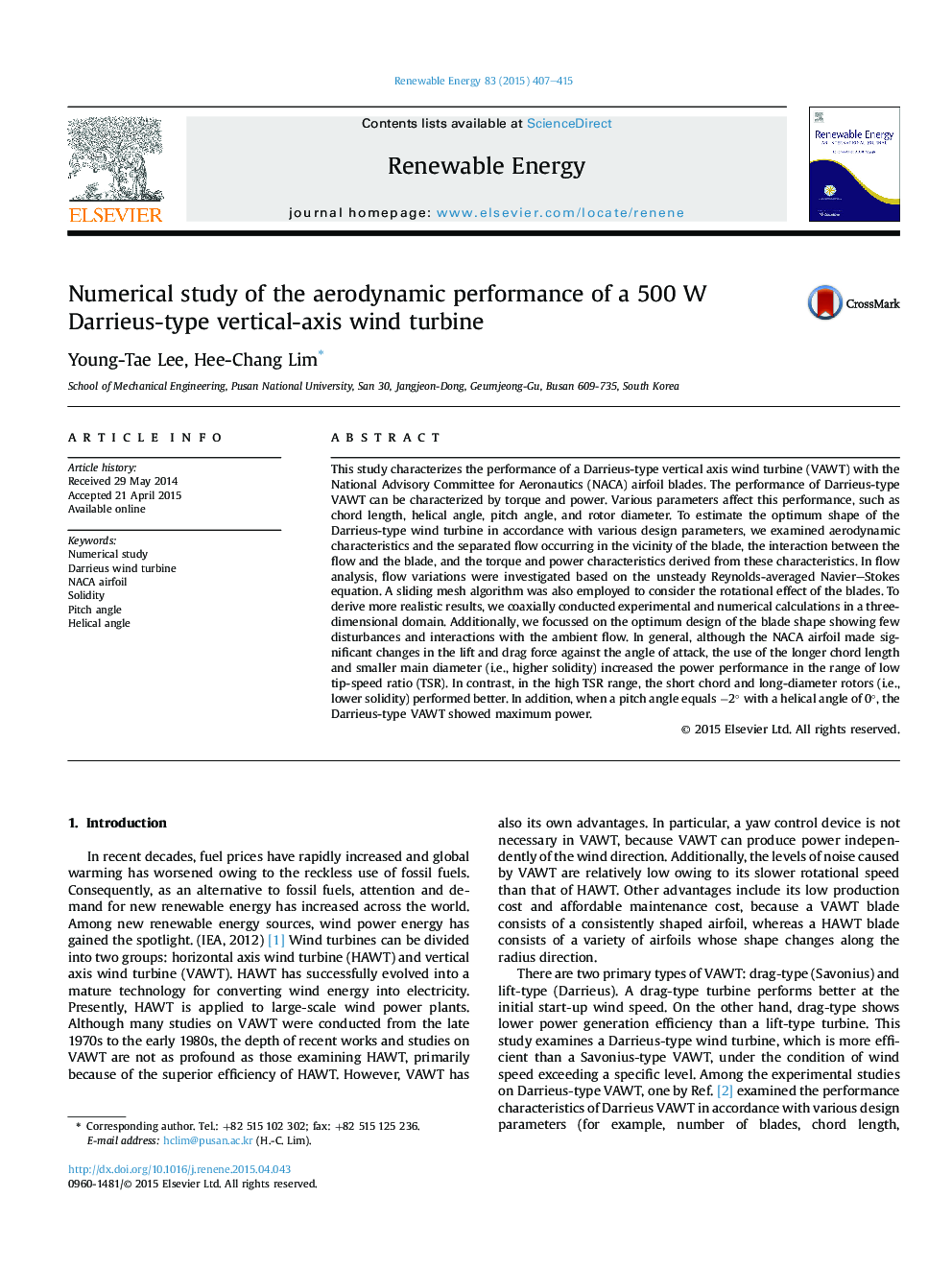| کد مقاله | کد نشریه | سال انتشار | مقاله انگلیسی | نسخه تمام متن |
|---|---|---|---|---|
| 6766950 | 512452 | 2015 | 9 صفحه PDF | دانلود رایگان |
عنوان انگلیسی مقاله ISI
Numerical study of the aerodynamic performance of a 500Â W Darrieus-type vertical-axis wind turbine
دانلود مقاله + سفارش ترجمه
دانلود مقاله ISI انگلیسی
رایگان برای ایرانیان
کلمات کلیدی
موضوعات مرتبط
مهندسی و علوم پایه
مهندسی انرژی
انرژی های تجدید پذیر، توسعه پایدار و محیط زیست
پیش نمایش صفحه اول مقاله

چکیده انگلیسی
This study characterizes the performance of a Darrieus-type vertical axis wind turbine (VAWT) with the National Advisory Committee for Aeronautics (NACA) airfoil blades. The performance of Darrieus-type VAWT can be characterized by torque and power. Various parameters affect this performance, such as chord length, helical angle, pitch angle, and rotor diameter. To estimate the optimum shape of the Darrieus-type wind turbine in accordance with various design parameters, we examined aerodynamic characteristics and the separated flow occurring in the vicinity of the blade, the interaction between the flow and the blade, and the torque and power characteristics derived from these characteristics. In flow analysis, flow variations were investigated based on the unsteady Reynolds-averaged Navier-Stokes equation. A sliding mesh algorithm was also employed to consider the rotational effect of the blades. To derive more realistic results, we coaxially conducted experimental and numerical calculations in a three-dimensional domain. Additionally, we focussed on the optimum design of the blade shape showing few disturbances and interactions with the ambient flow. In general, although the NACA airfoil made significant changes in the lift and drag force against the angle of attack, the use of the longer chord length and smaller main diameter (i.e., higher solidity) increased the power performance in the range of low tip-speed ratio (TSR). In contrast, in the high TSR range, the short chord and long-diameter rotors (i.e., lower solidity) performed better. In addition, when a pitch angle equals â2° with a helical angle of 0°, the Darrieus-type VAWT showed maximum power.
ناشر
Database: Elsevier - ScienceDirect (ساینس دایرکت)
Journal: Renewable Energy - Volume 83, November 2015, Pages 407-415
Journal: Renewable Energy - Volume 83, November 2015, Pages 407-415
نویسندگان
Young-Tae Lee, Hee-Chang Lim,